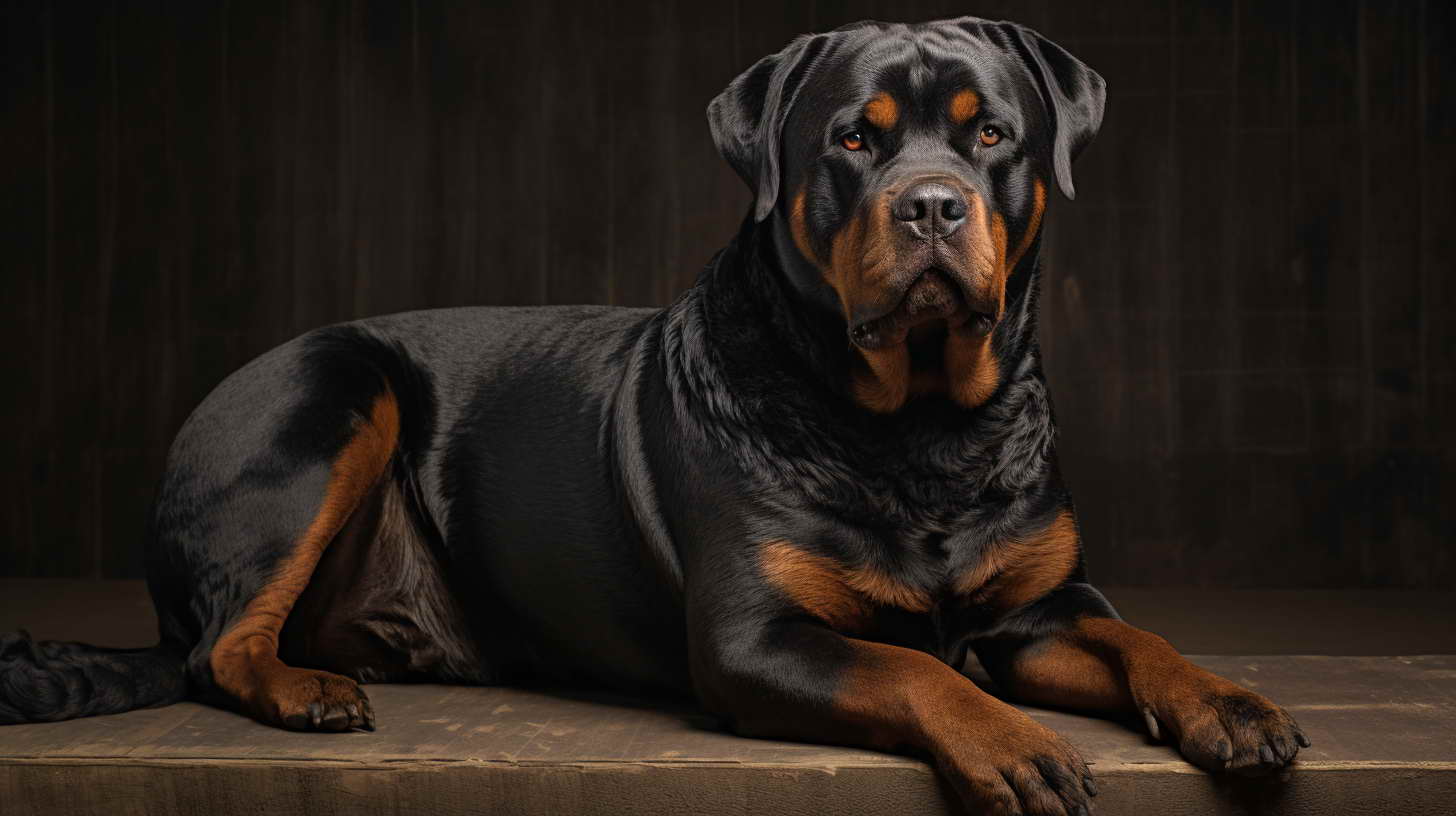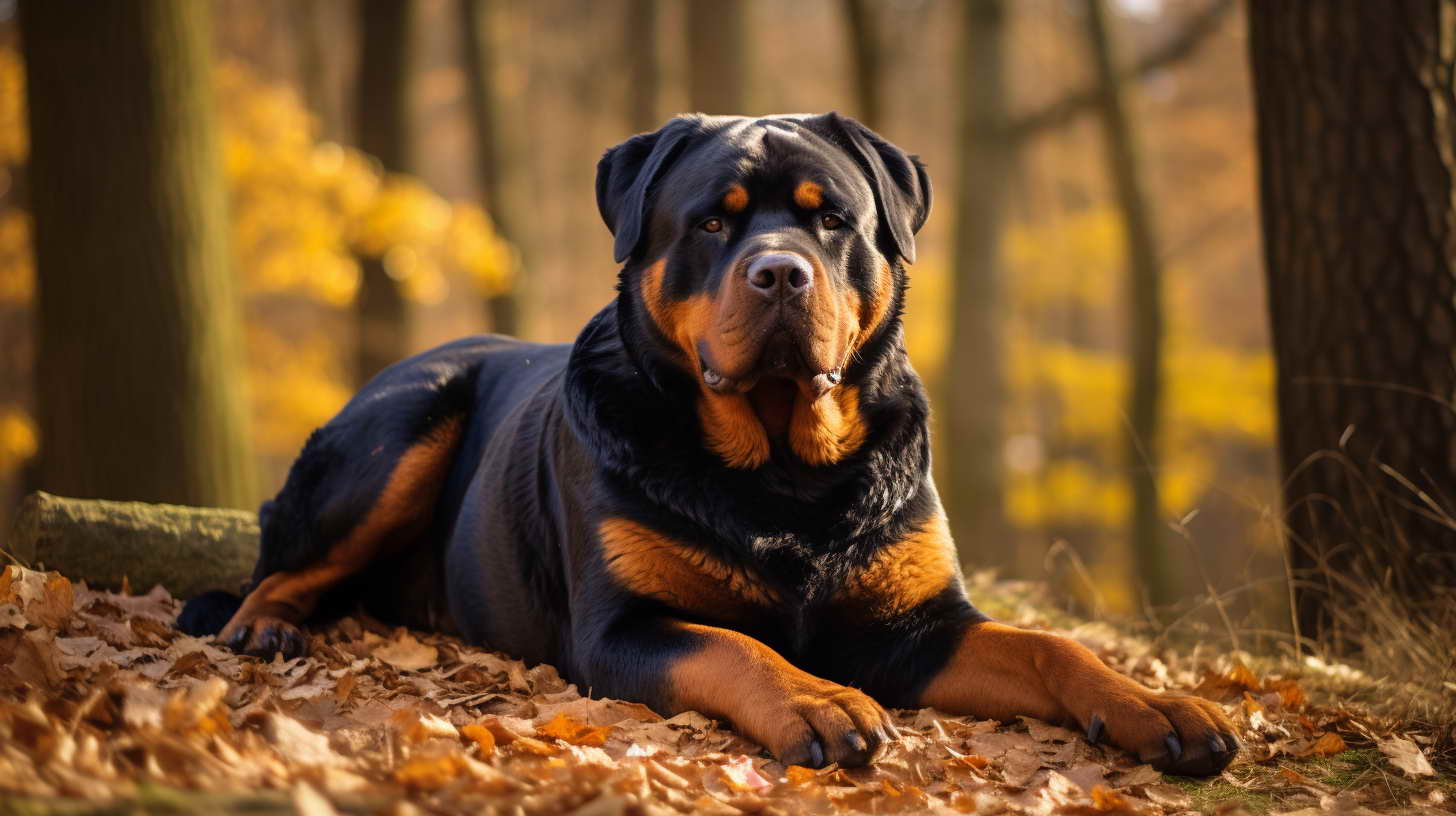Rottweiler Breeding Practices, Procedures, and Standards
PETSIDI – Rottweilers are a popular and beloved dog breed known for their loyalty, protectiveness, and loving nature. However, Rottweiler breeding is a complex process that requires extensive knowledge, skill, and care. Responsible Rottweiler breeders adhere to strict standards and follow expert-recommended practices to produce happy, healthy puppies. This article will explore the intricacies of ethical and responsible Rottweiler breeding.
Rottweiler Breed Standards
Reputable Rottweiler breeders use the official Rottweiler breed standard as a blueprint for their breeding program. The standard provides a detailed description of the ideal Rottweiler’s physical characteristics and temperament. Adhering to the standard helps preserve and improve the breed’s qualities. Important aspects include:
- Size – medium to large dog, males 24-27 inches tall, females 22-25 inches tall.
- Coat – straight, coarse, dense, short black coat with rich tan markings.
- Head – broad skull, pronounced stop, strong jaws.
- Eyes – almond-shaped, dark brown.
- Ears – triangular, high set, hanging forward.
- Tail – docked close to the body.
- Gait – balanced, powerful, effortless movement.
- Temperament – confident, courageous, alert, steady, obedient.
Breeders should select Rottweiler dam and sire pairs that closely match the standard to produce excellent quality puppies.
Rottweiler Health Screenings
Responsible Rottweiler breeders diligently perform a variety of health screenings to reduce the chances of inherited diseases and conditions. Recommended health tests include:
- Hip dysplasia – X-ray screening by OFA or PennHIP.
- Elbow dysplasia – X-ray screening by OFA.
- Cardiac exam – auscultation by a veterinary cardiologist.
- Eye exam – annual checks by a veterinary ophthalmologist.
- Autoimmune thyroiditis – blood test annually after 12 months old.
- DNA tests – for conditions like degenerative myelopathy and von Willebrand’s disease.
Breeding dogs should test clear for all conditions before breeding. Puppies can also be tested to confirm they did not inherit issues.
Rottweiler Temperament Evaluations
Rottweiler temperament significantly impacts suitability for work and companionship. Reputable breeders carefully assess temperament using methods like:
- Puppy aptitude tests – simple tests to evaluate sociability, curiosity, and playfulness.
- Canine good citizen test – evaluates polite manners and obedience skills.
- Therapy dog readiness assessment – tests the dog’s ability to interact safely with strangers.
- Working dog assessments – test traits like boldness, environmental stability, and self-control.
Breeders should only select breeding dogs with sound temperaments – confident yet controllable. Nervous or aggressive dogs are never bred.

Rottweiler Genetic Testing
Genetic testing helps Rottweiler breeders prevent the transmission of hereditary conditions to offspring. Recommended DNA tests check for:
- Von Willebrand disease – blood clotting disorder.
- Degenerative myelopathy – spinal cord degeneration.
- Polyneuropathy – nerve damage causing weakness.
- Macrodactyly – bone overgrowth in toes.
- Osteochondrodysplasia – skeletal abnormalities.
- Juvenile laryngeal paralysis/polyneuropathy – larynx/nerve damage.
Test results allow breeding choices that eliminate affected lineages from a Rottweiler’s pedigree. Testing provides vital insight into genetic health.
Rottweiler Lineage Tracing
Reputable Rottweiler breeders carefully research pedigrees and lineage using resources like:
- AKC registration – provides info on registered ancestry.
- UKC registration – United Kennel Club certified ancestry.
- Pedigree database – catalogs genealogy for analysis.
- Health databases – searchable records of health testing results.
- Kennel club records – documents showing achievements and lineage.
Pedigree analysis excludes inbreeding and reveals longevity and health trends. It confirms puppies come from excellent lineage.
Rottweiler Litter Management
Caring for a Rottweiler litter requires extensive preparation and diligent care. Best practices include:
- Providing an ideal whelping area – quiet, warm, clean.
- Monitoring the pregnant dam – weight, diet, activity.
- Having emergency supplies on hand – medical, feeding, cleaning.
- Supervising the whelping process.
- Weighing newborn puppies frequently.
- Rotating puppies during nursing.
- Maintaining meticulous hygiene.
- Giving supplemental feeding if needed.
- Monitoring puppy and dam health closely.
Proper litter management promotes excellent puppy care and socialization.

Rottweiler Kennel Clubs
Kennel clubs support and promote responsible breeding through services like:
- Dog registrations – tracks purebred legitimacy.
- Shows and trials – evaluate dogs to breed standards.
- Health databases – enables transparent health testing.
- Educational resources – breeding guides, seminars, workshops.
- Code of ethics – holds members to high standards.
- Disciplinary actions – sanctions unethical members.
Membership signifies a breeder’s commitment to kennel club standards and principles.
Rottweiler Breed Registrations
Registering puppies with kennel clubs like AKC provides:
- Certified pedigree – confirms purebred status.
- Permanent ID – microchip linking puppy to records.
- Health and trial databases – publicly document achievements.
- Competition eligibility – enables entry into shows, trials, etc.
- Educational programs – enhance breeder knowledge.
For buyers, registration ensures the puppy is purebred and supports responsible breeding. Ethical breeders always provide registration paperwork.
Rottweiler Puppy Care
Attentive care for Rottweiler puppies from birth to adoption includes:
- Monitoring puppy health and development – weight, milestones.
- Deworming and vaccinations start at 6-8 weeks old.
- Introduction to puppy food around 3-4 weeks old.
- Socialization – safely exposing puppies to new sights, sounds, and people.
- Enrichment activities – toys, games, variety.
- Housetraining and obedience foundations.
- Evaluating temperament and personality.
- Final veterinarian exam to confirm health before placement.
Proper Rottweiler puppy care ensures happy, well-adjusted companions.
Rottweiler Training Methods
Rottweiler training should utilize positive reinforcement methods, never punishment. Recommended techniques include:
- Reward-based training – using treats, and praise to reinforce wanted behaviors.
- Clicker training – using a clicker to precisely mark correct behaviors.
- Lure training – encouraging behaviors by presenting rewards.
- Modeling – demonstrating desired behaviors.
- Shaping – rewarding successive approximations of behavior.
- Prompt and fade – adding cues and reducing prompts.
- Engagement and relationship building – fostering trust and enthusiasm.
Positive training develops a well-trained Rottweiler through patience and care.
Rottweiler Socialization Techniques
Proper socialization is critical for the Rottweiler breed. Effective methods include:
- Introducing puppies to many people – men, women, children of diverse ages and appearances.
- Habituating puppy to handling – paws, ears, mouth, body.
- Controlled meetings with friendly adult dogs.
- Positive exposure to sounds – traffic, machinery, crying, shouting.
- Introduction to sights and surfaces – stairs, elevators, slick floors.
- Outings to busy parks or shops.
- Reward-based training classes.
- Maintaining experiences within the puppy’s comfort zone.
Rottweiler Behavior Modification
For any undesirable Rottweiler behaviors, rehabilitation should utilize:
- Identifying triggers – observing to detect patterns.
- Management – altering environment to prevent behavior.
- Desensitization and counterconditioning – gradually making trigger positive.
- Obedience training – teaching and rewarding alternate wanted behaviors.
- Enrichment – reducing stress and providing mental stimulation.
- Relationship building through training and play.
- Stress and anxiety reduction techniques as needed.
- Positive reinforcement only – never punishment.
With time and patience, problematic Rottweiler behaviors can be corrected positively.
Rottweiler Dietary Considerations
The Rottweiler diet should provide:
- High-quality protein – for muscle.
- Moderate fat – for energy and skin/coat.
- Appropriate carbohydrates – avoid excess carbs.
- Adequate fiber – for healthy digestion.
- Balanced omega fatty acids – for joints, brain, and vision.
- Vitamins and minerals – for immune health and metabolism.
- Chondroprotectants – for joint health.
- Probiotics – for digestion.
- Supplements if needed for conditions.
Rottweilers require tailored nutrition to thrive.
Rottweiler Exercise Requirements
As a working breed, Rottweilers need substantial daily exercise including:
- Walks – 45+ minutes total.
- Play-fetch, interactive toys.
- Training sessions – mental exercise.
- Hiking/jogging – for youthful Rottweilers.
- Swimming – low-impact conditioning.
- Socialization – dog parks, calm dog interactions.
- Enrichment activities – nose work, lure coursing, agility.
- Off-leash exercise – in safe enclosed areas.
- Rest – to avoid overexertion.
Fulfilling the Rottweiler’s needs prevents behavior issues.
Rottweiler Grooming Tips
Regular grooming is essential for a healthy Rottweiler coat:
- Natural bristle brushing 2-3 times per week removes dead hair.
- Monthly bathing with a gentle dog shampoo when needed.
- Nail trimming every 2-3 weeks.
- Ear cleaning weekly with a veterinarian-approved cleaner.
- Brushing teeth 2-3 times per week.
- Skin examination for any abnormalities like hot spots.
- Trimming fur between foot pads if needed.
Proper tools, technique, and frequency keep the Rottweiler looking handsome.

Rottweiler Breeding Ethics
Ethical Rottweiler breeding practices include:
- Rigorous health testing and truthful disclosure of results.
- Breeding is primarily for health and temperament, not just appearance.
- Avoiding overbreeding by allowing reasonable rest between litters.
- Placing puppies only in carefully screened homes.
- Lifetime support for owners if challenges arise.
- Taking back dogs if an owner can no longer care for them.
- Striving to better the breed through research and mentorship.
- Making all breeding decisions in the best interest of dogs, not profit.
Ethics should be the Rottweiler breeder’s top priority.
Rottweiler Reproductive Health
Veterinarian guidance for the breeding pair supports reproductive health:
- Pre-breeding exams – assess fitness for breeding.
- Vaccinations – prevent infectious abortion or illness.
- Parasite prevention – stop transplacental or venereal infections.
- Fertility testing – identifies optimal timing for breeding.
- Artificial insemination if needed for logistical or health reasons.
- Pregnancy monitoring – weight, diet, exercise adjustments.
- Whelping supervision by an experienced professional.
- Post-whelping care – monitors recovery.
Proper management safeguards the dam’s well-being.
Rottweiler Whelping Procedures
The whelping process requires vigilant monitoring including:
- Tracking contractions and abdominal straining.
- Preparedness to clear airways and dry puppies immediately.
- Separating the placenta from each whelped puppy.
- Cutting and tying the umbilical cord about 1-2 inches from a puppy.
- Checking puppies for movement and breathing.
- Weighing and identifying puppies for record keeping.
- Allowing uninterrupted nursing once the litter is fully delivered.
- Watching for postpartum discharge indicates placental expulsion.
Handling whelping properly optimizes puppy health.
Rottweiler Puppy Vaccinations
Vaccines protect Rottweiler puppies from dangerous infectious diseases:
- 6 – 8 weeks – distemper, hepatitis, parainfluenza, parvovirus.
- 12 – 14 weeks– rabies vaccine.
- 16 – 18 weeks – final core vaccine booster.
Optional vaccines like Lyme, influenza, or kennel cough may also be beneficial depending on the environment and risk factors.
Following veterinary guidelines ensures full immunity.
Rottweiler Puppy Socialization
Optimal socialization consists of:
- Hundreds of positive exposures between 3 and 16 weeks old.
- Introducing a variety of sounds, sights, surfaces, people, and dogs.
- Pairing new experiences with treats and praise.
- Advancing slowly within the puppy’s comfort zone.
- Avoiding punishment or flooding the puppy beyond tolerance.
- Maintaining excellent hygiene and biosecurity.
- Practicing obedience commands in all environments.
Thorough, controlled socialization prevents behavioral issues.
Rottweiler Puppy Nutrition
Puppy diets require:
- High-quality protein and fat for growth.
- DHA for brain development.
- Calcium and phosphorus balance for bone.
- Digestibility enhancement for sensitive puppy stomachs.
- Omega fatty acids for joints and immunity.
- Probiotics and prebiotics for healthy digestion.
- Extra vitamins and minerals compared to adult food.
- Portion control to avoid obesity.
Proper nutrition enables healthy growth and development.
Conclusion
Responsible Rottweiler breeding requires extensive knowledge and dedication. By adhering to breed standards, performing health tests, carefully selecting breeding dogs, tracing pedigrees, properly caring for litters, and supporting puppy owners, ethical breeders produce outstanding Rottweilers with sound temperament and vigor. Rottweiler lovers should only obtain puppies from breeders who demonstrate a deep commitment to furthering the breed through diligent effort and integrity. With responsible breeding, the noble Rottweiler will continue flourishing for generations to come.


Leave a Reply